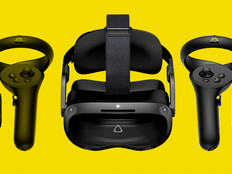Infrared Sensors Are a First Line of Defense
Infrared sensors detect and report surface temperature. The accuracy of infrared thermometers is on par with reliable rectal thermometers, according to PubMed.
Temperature screening technologies typically fall into three broad categories, says Rachelle Loyear, ISACA security subject matter expert and vice president of integrated security solutions at G4S, a multinational security services company. Handheld sensors typically are the simple point-and-read tools available at local drugstores and pharmacies. There is also movable technology that often forms part of a station — “smaller, camera-based systems that will automatically measure the temperature of a single person walking in a predesignated primary screening area,” Loyear says.
The third category includes integrated solutions that, Loyear says, “tie in directly to technology systems like access control, turning access credentials on and off based on the screening results.” Movable and integrated solutions such as drones generally provide greater value over time as part of larger data collection and analysis efforts to help manage changing conditions at scale. The jury is still out, however, about the accuracy, effectiveness and feasibility of infrared drones for scanning crowds.
Research has shown that these drones vary in accuracy by as much as 5 degrees Celsius — far too significant a discrepancy to gauge human fevers, let alone any illness they might indicate.
READ MORE: Consider these factors when choosing fever detection technology.
Practical Questions of Accuracy and Privacy
A fever is just one of many symptoms of COVID-19, and there are numerous reasons why someone may have an elevated body temperature.
“Surface temperature is not the same over an entire body,” Loyear says. “With people walking around in clothing, carrying laptop bags, possibly carrying hot coffee, maybe just getting in from the cold, this expectation is just not reasonable nor accurate.”
Elevated temperature readings alone don’t confirm illnesses such as COVID-19, but they can help school leaders identify potential carriers and reduce spread.
K–12 administrators should also be mindful of privacy concerns when they implement large-scale sensor deployments and be transparent about what happens to the data they collect.
“Is the goal simply to deny entry to someone with an elevated temperature?” Loyear asks. “Or, is the school trying to track trends? Are these trends macro or micro?”











